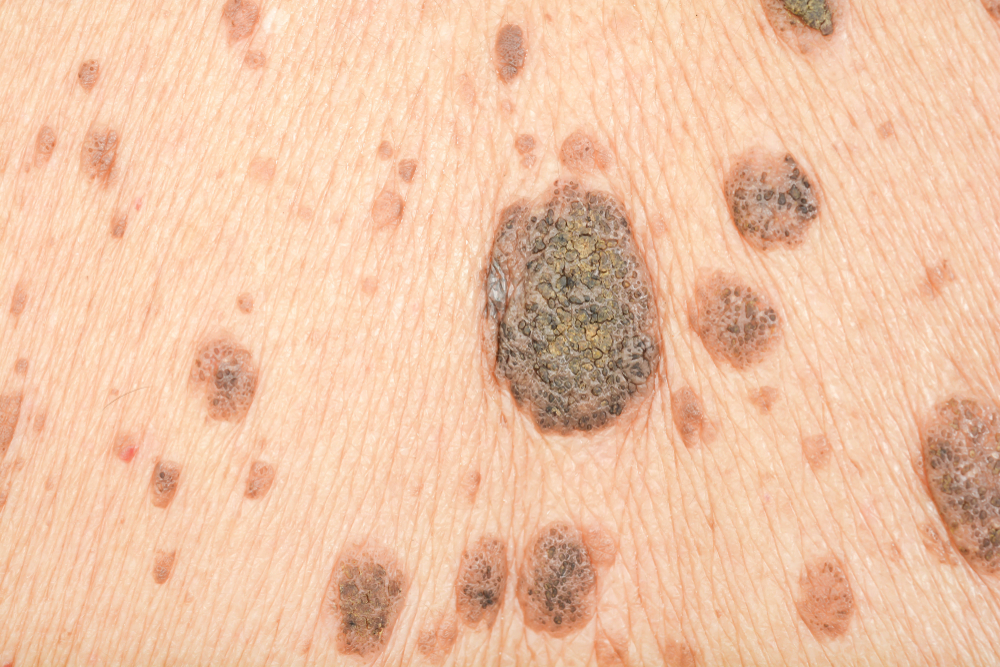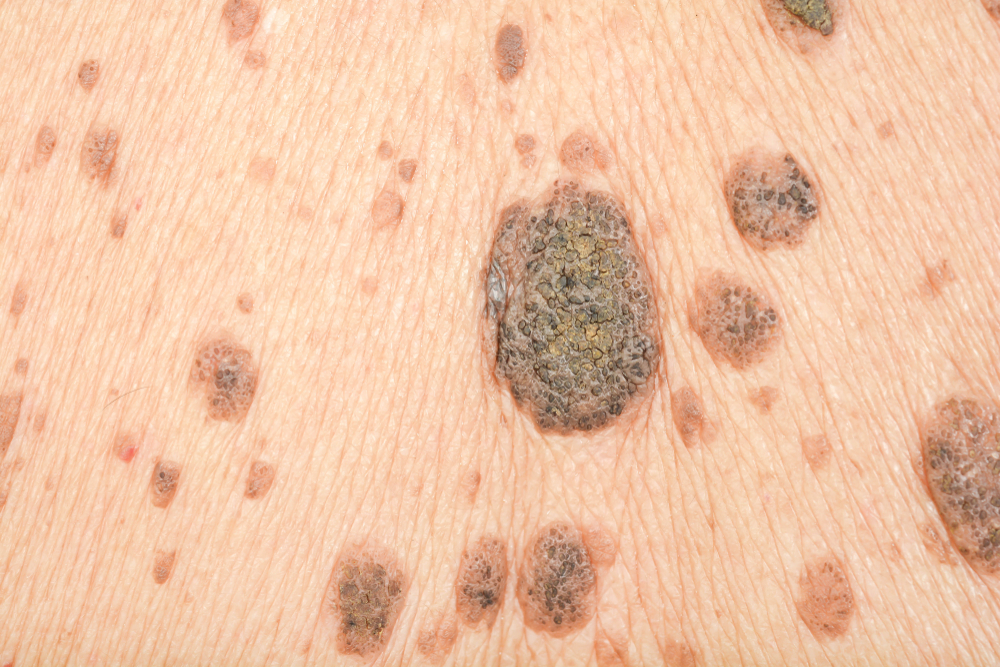Seborrhoeic Keratosis
Seborrheic keratoses are common benign skin growths that typically appear in middle age and become more common with advancing age. Unlike some skin growths that can be precancerous, seborrheic keratoses themselves are not cancerous. However, they can resemble other skin lesions that might be concerning.
If you notice a seborrheic keratosis or any unusual growth on your skin, it’s important to consult a healthcare provider for proper diagnosis and evaluation. They can confirm whether it is indeed a seborrheic keratosis and discuss options for removal if desired for cosmetic reasons or if the growth causes discomfort.

A seborrheic keratosis is a common benign skin growth that resembles a mole in appearance. It is prevalent, with most individuals developing at least one during their lifetime. These growths typically start appearing in mid-adulthood and become more frequent with age. Seborrheic keratoses are harmless and generally do not require treatment, but they can be removed if they are bothersome for cosmetic reasons or due to irritation.
These skin growths, including seborrheic keratoses, are sometimes referred to as epidermal tumors. However, it’s important to note that the term “tumor” in this context does not imply cancerous growths. Moles and warts are also categorised as epidermal tumors because they consist of clusters of extra cells in the outer layer of the skin (epidermis). None of these benign growths are considered a risk factor for skin cancer.
Anyone can develop seborrheic keratoses, but they are most commonly found in:
- Individuals aged 50 and older: These growths typically start appearing in middle age and become more prevalent with advancing age. About 30% of people have at least one by age 40, and about 75% have them by age 70.
- Individuals with a family history: Approximately half of cases involving multiple seborrheic keratoses occur in families, suggesting a genetic predisposition.
- Lighter-skinned individuals: The classic form of seborrheic keratosis is less frequently seen in darker-skinned people. However, a variant known as dermatosis papulosa nigra is common among individuals of African, Asian, and Hispanic descent.





